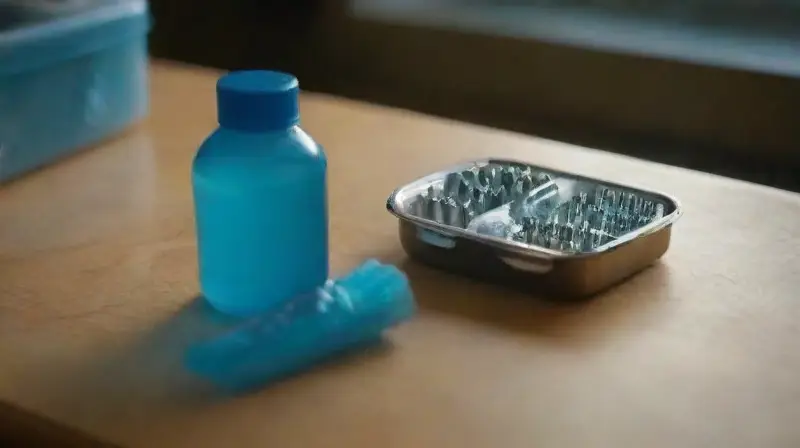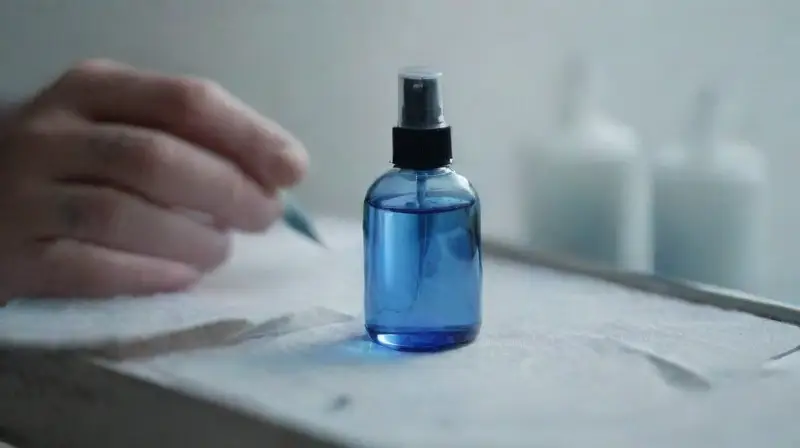Tattooing is a meticulous art that requires not only skill but also hygiene. Proper disinfection of equipment is essential to prevent the spread of infections and ensure the safety of both the artist and the client. Many new tattoo artists overlook the importance of thorough cleaning, which can lead to serious health complications. Therefore, understanding the steps involved in disinfecting tattoo equipment is crucial for maintaining professional standards.
In addition to protecting health, effective disinfection enhances the quality of the tattooing process. It minimizes the risk of cross-contamination and ensures that all tools used are sterile and safe. Implementing proper cleaning procedures also promotes client trust and upholds the artist’s reputation. Regularly following disinfection protocols is an essential part of responsible tattoo practice.
Gather Necessary Supplies
Before starting the disinfection process, ensure you have all necessary supplies at hand. This typically includes disinfectant solutions, disposable gloves, sterilization pouches, brushes, and microfiber cloths. Having all materials readily available makes the process smoother and more efficient.
Choose high-quality, medical-grade disinfectants recommended for tattoo equipment. These solutions are effective against a broad spectrum of bacteria and viruses, providing reliable protection. Additionally, using disposable gloves during cleaning helps prevent cross-contamination, maintaining a clean environment throughout the process.
Make sure to also have a clean, designated area for disinfection. This helps contain any potential contaminants and keeps your workspace organized. Proper storage of sterilized tools is equally important to prevent recontamination. Organizing your supplies beforehand minimizes interruptions and ensures thorough cleaning.
Prepare the Workspace
Creating a clean workspace is fundamental before disinfection. Remove any clutter or unnecessary items to reduce the risk of contamination during the cleaning process. A tidy environment not only promotes safety but also improves efficiency.
Sanitize all surfaces in the area with an appropriate disinfectant prior to starting. This includes counters, trays, and storage bins. Wiping down these surfaces regularly helps maintain overall hygiene standards in your studio. An organized space also makes it easier to follow disinfection protocols systematically.
Ensure proper ventilation in the workspace. Adequate airflow helps disperse fumes from disinfectants and sterilization agents, making the environment safer. If possible, work in a well-ventilated room or near a fume extractor. Maintaining a hygienic and ventilated area is key to safeguarding both health and equipment.
Clean Equipment Thoroughly

Begin with a detailed cleaning of all tools used during tattooing, including machines, grips, tubes, and needles. Use warm water and an enzyme-based cleaner to remove ink residue, blood, and other debris. Proper cleaning prepares the equipment for sterilization and maximizes disinfectant effectiveness.
Use brushes designed for medical cleaning to scrub hard-to-reach areas on the tools. Take care to remove all visible residues without damaging the equipment. Regular cleaning after each client helps prevent build-up and reduces the risk of contamination.
After the initial cleaning, rinse all tools thoroughly with clean water to remove any remaining soap or cleaner residues. Dry them completely with a lint-free cloth or allow them to air dry. Proper cleaning is an indispensable step before sterilization, ensuring that all microbes are eliminated effectively.
Sterilize Instruments
Sterilization is the most critical step in disinfection. Use an autoclave or sterilizer to properly sterilize all reusable equipment. These devices use high-pressure saturated steam to eliminate bacteria, viruses, fungi, and spores.
Follow the manufacturer’s instructions carefully to ensure effective sterilization cycles. Pack the tools in sterile pouches before placing them into the autoclave. Proper packaging helps maintain the sterility of tools after the process.
After sterilization, carefully store the tools in a clean, dry area to prevent recontamination. Keeping your sterilized equipment in sealed, labeled pouches prolongs their safety until next use. Consistent sterilization practices are vital for client safety and legal compliance.
Use Disposable Supplies
Whenever possible, opt for disposable items such as needles, grips, ink caps, and gloves. These items eliminate the need for sterilization between clients and significantly reduce the risk of cross-infection.
Ensure that disposable supplies are stored in sealed containers to maintain their sterility. When ready to use, open them in a clean area to prevent contamination. Disposables are not only more hygienic but also save time during the setup and cleanup stages.
Proper disposal is equally important. Dispose of used disposable items immediately in designated biohazard containers. Follow local regulations for biomedical waste disposal to ensure environmentally safe and legal compliance.
Maintain Personal Hygiene

Personal hygiene plays a vital role in preventing contamination during tattooing. Always wash your hands thoroughly with soap and water before and after handling equipment. Proper handwashing reduces microbial presence on the skin surface.
Wear gloves at all times when handling equipment and working with clients. Replace gloves frequently, especially if they become torn or contaminated. This practice creates a barrier that prevents transmission of germs.
In addition to gloves, wear protective clothing such as aprons and masks when necessary. Maintaining good hygiene habits helps protect both the artist and the client from potential infections. Consistent personal cleanliness is essential to upholding professional standards in tattooing.
Keep Records and Follow Protocols
Document every step of your disinfection process for quality control and legal purposes. Maintain a log of sterilization cycles, cleaning routines, and supplies used. This record-keeping demonstrates your commitment to safety and can be valuable during inspections.
Adhere strictly to manufacturer instructions and local health regulations regarding disinfection procedures. Regularly review and update your protocols to incorporate the latest industry standards. Ongoing education about best practices ensures that your studio remains compliant and safe.
Finally, train all staff members thoroughly on disinfection and hygiene protocols. Consistent training ensures everyone understands their responsibilities and maintains high standards. Proper documentation and adherence to protocols safeguard both your business and your clients’ health.
Conclusion
Disinfecting tattoo equipment before use is a fundamental practice that protects everyone’s health and ensures the longevity of your tools. By following systematic procedures, you reduce the risk of infections and maintain a professional environment. Consistent efforts in cleaning and sterilization demonstrate your commitment to safety and quality.
Implementing comprehensive disinfection protocols not only enhances client confidence but also aligns with industry standards and legal requirements. Investing time and resources into proper hygiene practices pays off by preventing complications and fostering trust. Always remember, hygiene is the foundation of responsible tattooing.



